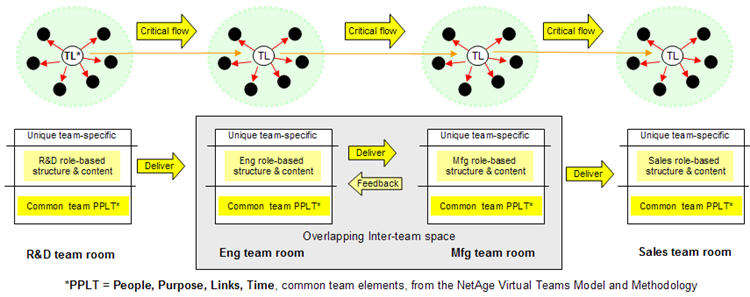Team places are inhabited by people playing roles in ongoing activities. New people see how things are done and who does them, and are socialized into the group while becoming familiar with the overall work process of the team. As people come and go, the roles remain to shift and change within the team’s ongoing pattern of roles.
What is historically new is the team’s cognitive capability to capture its work and learning in a shared space available to members from anywhere anytime.
As people go in the room and work, they leave tracks of their activity and deposit contributions throughout the space. However, the digital room “knows” that each person has a position (job) and plays a specific role in this team. Each posting, comment, or other action in a team can be simultaneously viewed as authored by a person, a position, and a role. This is the basis of capturing local team knowledge by position and role that can be transferred from one person to another.
